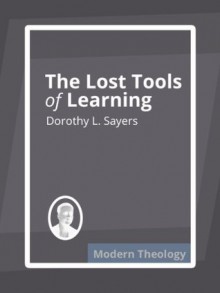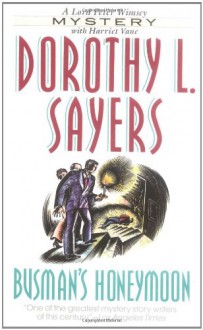
The triumphant return of reading notes! This month, I plan to re-read and talk about four mysteries by Dorothy Sayers. Specifically, those which feature both Harriet Vane & Lord Peter Wimsey, since Harriet + Peter = otp forever. As always, these posts may (will!) contain massive spoilers so beware if you wish to avoid them.
As much as I love the other books with Peter and Harriet, for me Gaudy Night is the apex of the series (which led to me not re-reading Busman’s Honeymoon for years). It’s not a coincidence at all that this is also Harriet’s book, told almost entirely from her point of view, and centered around her journey. (So much so that Peter hardly appears until page 300 out of 500.)
Part of the reason I love re-reading this book is that the writing itself is so beautiful. There’s a clarity to the narrative voice which begins with the first line and never lets up; I keep thinking of bells, appropriately enough. The descriptions of Oxford and depictions of Harriet’s inner life are some of Sayers’s best work, and she has a fine command of motif and imagery.
Harriet herself is not simply a stand-in for Sayers, but at the same time, she is writing out of personal experience. This lends the whole a richness and integrity that really makes it shine. It’s also a wonderful example of a writer writing about a writer writing, in a way that both matters to the overall story and rings true.
This is especially apparent in the thread of Wilfrid, Harriet’s detective. Sayers is very clearly mirroring her own evolution in terms of Peter’s portrayal, but at the same time she uses this to point out Peter’s attitude towards Harriet’s work. She writes about the process of making Peter human, by writing him being human, which is a great kind of meta. And she’s similarly clear about the cost and reward of Harriet’s pushing herself to write a better book, full of her own integrity.
But Harriet’s mystery writing–while important to the story–perhaps pales beside poetry, both hers and others. This book is rife with references: even before the first original words, we have Donne, Shakespeare, and Philip Sidney quoted. Each chapter opens with an epigraph from an Elizabethan or Jacobean poet. I’ve said that Peter & Harriet conduct their courtship via quotation, and I stand by it. There’s a memorable line from Harriet: “Do you find it easy to get drunk on words?” And Peter’s answer: “So easy that, to tell you the truth, I am seldom perfectly sober.” Partly this is due to the kind of intellect-loving people they are. But also, it shows their similarity of mind; even at the beginning of Strong Poison, they start their relationship by quoting at each other.
And there’s also that sonnet, written between the two of them. I find it tempting to read it as a microcosm of their temperaments: Harriet’s sestet, full of emotion and clarity, and Peter’s octave, full of technical brilliance hiding depth of feeling. (I also love the way Sayers pulls an image from the poem into her own text, noting Harriet’s writing “like a large top on a small spindle.” And since the spindle is the still center of the world within the poem, what does that say?)
******
The book opens with Harriet deciding to go back to Oxford for the first time since she graduating, and Oxford becomes another character within the story. Additionally, Harriet and Sayers are concerned with Women’s Colleges, and the plot gives a chance for both to meditate on the joys and perils of women in academia. When we first encounter Shrewsbury College, there’s a tension between the memory of its perfections and the expected reality. Harriet has put aside her well-loved past and exiled herself, but now she is going home, uncertain of her welcome or whether its beauties will endure.
The sense of Oxford as a space set aside runs through the whole book; even when that becomes complicated by events, it remains that still center. It’s Harriet’s fears of being unwelcome, of finding it changed, of finding its heart rotten that provide the tensions propelling the story. So much of what is not about Harriet and Peter is about the complications of female community and the beloved ideal which both is and is not true. But it’s only when Harriet comes home, literally and figuratively, that she can find her own value and so see Peter’s truly as well. Of course it’s here that their relationship finally comes right.
It also gives Sayers a chance to voice some trenchant remarks on the subject of Men. “All the men have been amazingly kind and sympathetic about the Women’s Colleges…But you won’t find them appointing women to big University posts. That would never do.” It’s made quite clear that much of the anxiety over the Poison Pen letters is the fact that Shrewsbury will be judged more harshly because it is a Woman’s College, which we see in the unequal consequences Miss Cattermole and Mr. Pomfret face. Sayers is concerned with women and the intellect, with women’s places (how much of Annie’s anger is driven because she sees the dons has having taken men’s jobs?). So much of what she writes here is still horribly relevant, right down to Mr. Pomfret. (I feel that most of us know a Mr. Pomfret.)
******
But always the center of the book comes back to Harriet. I never felt that she was two-dimensional, even in Strong Poison and Have His Carcase, but in Gaudy Night she is shaded in. Partly because the narrative is centered on her, and partly because it’s here that she finds the fullness of that integrity she already had.
This is really exemplified in the way she approaches the idea of her job. At the very beginning, she thinks: “To be true to one’s calling, whatever follies one might commit in one’s emotional life, that was the way to spiritual peace.” But this peace eludes her at first, and it’s only when she immerses herself in Oxford that she finds “a deep inner certainty that somehow, after long and bitter wandering, she was once again in her own place.” This certainty manifests itself in poetry, “the singing voice,” which is of course part of her calling and the part that had been most lost to her.
At the same time, she’s forced to strip away her misconceptions of herself. She leaves behind that idea of herself embittered and alone and ungifted. At the end of the book she sums it up herself by saying: “It isn’t only that I have found a value for myself,” although this is in fact the most important part of it. Most of this book is about that coming to see herself clearly, finding that singing voice again. For Harriet, her self and her job are wound up in each other and in being true to one, she is true to the other.
And yet, it’s also about learning to see Peter clearly. Her conceptions of him are not false, exactly, but they are not complete either. Until she has entered into the fullness of her self, she can’t admit him either for fear that he’ll take over; it’s only when she can stand firmly in the heart of her power that she can turn outward in the truest sense.
******
But Peter isn’t a stagnant character either. The moment he actually steps onto the stage, he oversets Harriet’s images of him by appearing completely at home in Oxford (“He came into the quiet room as though he belonged there, and had never belonged to any other place”). It acts a space set apart for Harriet, but it does the same for Peter, allowing him to put aside the mask of jolly piffler to show his true self.
In their first meeting after he comes to Oxford, Harriet thinks, “She had fought him for five years and found out nothing but his strength; now, within half an hour, he had exposed all his weaknesses, one after the other.” Until this point, he has appeared in the book mostly in the form of correspondence, but it’s the letters that he and Harriet exchange which, I think, open the door to the intimacy that he shows once he is physically present.
If Harriet finds her value, Peter can finally strip away his vanity and arrogance, admitting this last great fault in his asking forgiveness for the years he spent trying to keep her in his grasp. Although we’re not privy to his growth the way we are to Harriet’s, it’s clearly there nonetheless. “I set out in a lordly manner to offer you heaven and earth. I find that all I have to give you is Oxford–which was yours already,” Peter says in the final pages. All he can really give is himself.
******
Early in the book, Miss de Vine tells Harriet, “Detachment is a rare virtue, and very few people find it lovable…If you ever find a person who likes you in spite of it–still more, because of it–that liking has very great value.” Of course, it is precisely that detachment, her “devastating talent for keeping to the point and speaking the truth” that Peter loves in her. While he changes, this does not, and it provides that central core of respect that he demonstrates towards her here.
Harriet spends the course of the novel learning how to believe that if she lets Peter in, she will not lose herself; Peter spends it learning how to give himself without overwhelming, giving that self he keeps masked from the world. This, for me, is where the real attraction lies: not in Peter himself so much (though, ahem, I don’t object) as in the idea of a romantic relationship based on mutual respect and understanding.
But even before this, neither of them is willing to be less than honest. Peter offers that to Harriet in his critique of her work, paying her the compliment of taking it seriously. Harriet demands it of Peter, saying, “If you are not [honest], then I shall lose you, because you wouldn’t be the same person, would you?” I think it’s this foundation of honesty, with and about each other, which convinces me that the rest is possible. It’s this mixture of respect and truth that lets Peter say–and mean it–“But I know that, if you have put anything in hand, disagreeableness and danger will not turn you back, and God forbid that they should.”
Most of all, perhaps, it’s the fact that their journey is to see each other clearly and to love what they see there. Rather than leaving themselves aside and becoming the other person, they learn to become more truly themselves together. “Give me your hand, and we’ll fight on until we drop,” Peter says at the beginning of the book, and by the end we see that coming to fulfillment. The beauty of the final pages is only possible because they have left behind their old arguments and defenses and labored to deal honestly with the other person. And so the reward for the reader is a belief in the rightness of their marriage, because it is based on things which endure.
Book source: personal library


 Log in with Facebook
Log in with Facebook 









